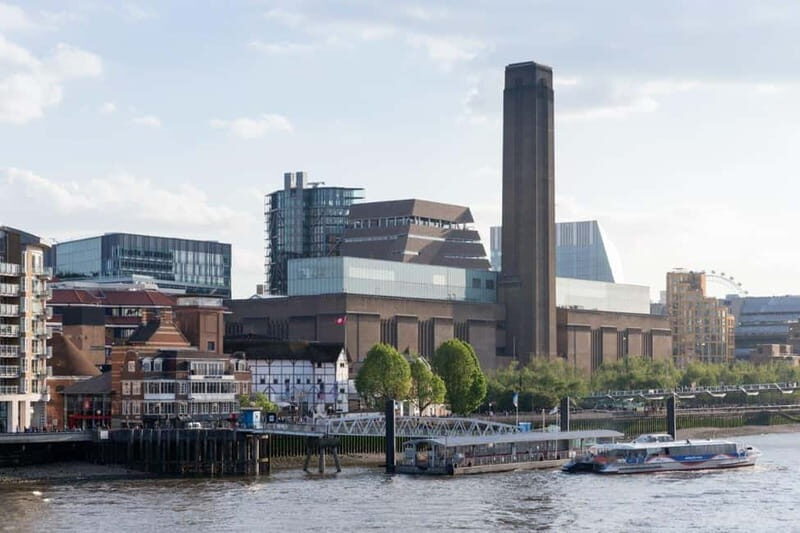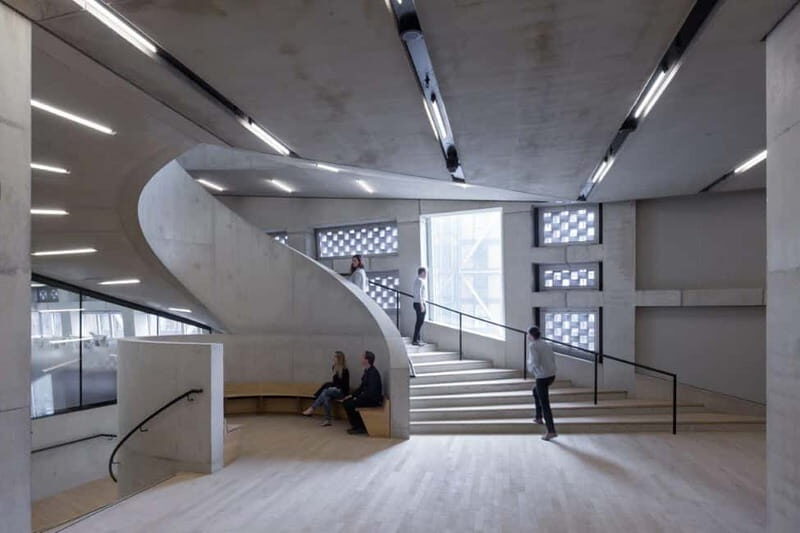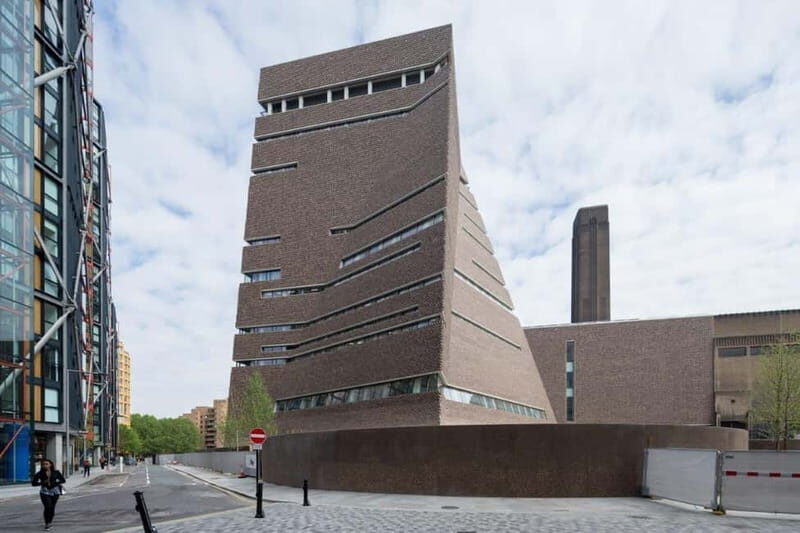Imagine stepping into a world where architecture, memory, and identity blend seamlessly through fabric, sculpture, and video. That’s exactly what you get at the Genesis Exhibition: Do Ho Suh: Walk The House at Tate Modern. This exhibition offers an intimate yet expansive look into the work of one of today’s most inventive contemporary artists. As an art lover or curious traveler, you’ll find yourself drawn to Suh’s unique ability to explore what home really means—whether as a place, a feeling, or an idea.
What makes this experience stand out? We love the way Suh’s large-scale fabric architectures transform familiar spaces into delicate, almost ghostly structures you can walk through. The second highlight is the engaging way the exhibition invites questions about belonging, identity, and how we inhabit the world. The only caveat is that, with only an hour to explore, some might wish for a bit more time to fully absorb the depth of each installation. Still, this tour appeals most to those with an interest in contemporary art, architecture, or anyone curious about the subtle ways space shapes our lives.
Key Points

- Innovative artworks blend architecture, sculpture, and video to explore complex themes.
- Large-scale fabric structures allow visitors to walk through and experience space differently.
- The exhibition raises timely questions about home, identity, and belonging.
- New and site-specific works are displayed for the first time, adding fresh insights.
- The experience is wheelchair accessible and supported by strong partnerships, ensuring quality.
- It offers a concise, thought-provoking visit ideal for curious travelers and art aficionados.
What to Expect from the Exhibition

The Do Ho Suh: Walk The House exhibition is carefully curated to give visitors a broad view of Suh’s creative journey over three decades. The focus revolves around his exploration of home and space—not just in a physical sense but also emotionally and psychologically.
As you enter, you’re greeted by large-scale installations and sculptures that often look like delicate fabric versions of familiar dwellings. These aren’t just pretty objects—they’re invitations to reflect on memories, transitions, and personal histories. You’ll also encounter videos and drawings, which deepen the narrative behind the fabric architectures and add context to his works.
One of the highlights is wandering through recreations of past and present homes—from Seoul to New York—and experiencing how Suh represents these spaces in a translucent, fabric form. These structures are often life-sized, inviting you to walk around, and sometimes through, their skeletal frameworks. The tactile nature of fabric means they seem light and fragile, yet they hold powerful stories embedded in their form.
Suh’s sculptures also explore the notion of monuments—how they represent collective memory or individual significance. Some pieces are delicate, others monumental, but all encourage viewers to think about the tradition of monuments and their evolving meanings.
The exhibition includes new and site-specific works, presented for the first time, which means you’re witnessing a cutting-edge survey of Suh’s practice, not just a retrospective. Supported by Tate and Genesis, the exhibition benefits from high-quality curation and the generous support of the Genesis Exhibition and Tate Members.
You can also read our reviews of more tours and experiences in London.
Breaking Down the Experience

The exhibition’s layout makes it easy to navigate, especially if you’re in a hurry. Expect to spend around an hour, but if you’re a deeper thinker or an art enthusiast, you might linger longer. The layout is designed to walk you through different themes—space, identity, connection—each represented through different mediums.
Large-Scale Fabric Architectures
These installations are the heart of the exhibition. They look like ghostly houses or corridors, made of translucent fabric that shifts and moves with your perspective. We loved the way these structures blur the line between sculpture and architecture, making you feel like you’re walking through a dream of a home. Visitors frequently comment on their delicacy and poetic presence, describing them as “haunting yet beautiful” and “a new way to see familiar spaces.”
Sculptures and Monuments
Suh’s sculptures often explore the tradition of monuments, reinterpreted through the lens of personal memory. Some are smaller, delicate pieces, encouraging a close-up view, while others are monumentally scaled—a reminder of how individual stories can become collective symbols.
More Great Tours NearbyVideos and Drawings
The videos provide context and narrative, often showing Suh’s creative process or the installation of his works. The drawings reveal the intricate details and planning behind each piece, giving insight into his meticulous approach.
Site-specific and New Works
We were especially impressed by the new works created specifically for this exhibition, available only here. These pieces offer fresh perspectives and demonstrate Suh’s ongoing evolution as an artist. They also highlight his interest in how space and memory evolve over time.
Practical Details & Tips

The exhibition runs for about one hour, so plan accordingly. It’s located at Tate Modern in London’s Southbank, easily accessible and close to other major attractions. To visit, you’ll need to exchange your booking confirmation for an entry ticket at the Turbine Hall ticket desk—allowing a 15-minute window prior to your scheduled time.
Tickets are included in your booking, and the exhibition is accessible for wheelchair users. If you’re traveling with someone managing mobility issues, this is a good choice, as the fabric structures are navigable.
The cost is quite reasonable considering the scope and depth; you’re paying for an engaging, thoughtfully curated experience that reveals the subtle power of space and memory. Since Tate is free for general entry, this exhibition costs a bit extra but offers a focused, high-quality showcase of Suh’s latest and most significant works.
Who Should Visit?
This tour is a perfect fit for art lovers, architecture enthusiasts, and people interested in personal narratives. If you’re curious about how space influences identity or want a fresh take on what a “home” can be, Suh’s work provides compelling insights. It’s also ideal for visitors who appreciate thought-provoking, visually poetic art that invites reflection without overwhelming.
Because of its manageable 1-hour duration and accessible layout, it suits both short visits and more contemplative explorations. Families with older children or teens interested in contemporary art will also find plenty to discuss here.
The Sum Up
The Genesis Exhibition: Do Ho Suh: Walk The House offers a unique look at how architecture, memory, and personal history intertwine through innovative use of fabric, sculpture, and video. The exhibition’s focus on large-scale installations allows visitors to walk through and experience Suh’s delicate reconstructions of home spaces, prompting questions about identity and belonging that resonate universally.
What we appreciate most is the thoughtfulness of the curation and the insightful works that are as visually stunning as they are intellectually stimulating. With friendly, knowledgeable guides and the support of Tate’s high standards, this tour provides genuine value for those eager to see how contemporary art can challenge and expand our understanding of familiar themes.
This experience is best suited for those with an interest in contemporary art, architecture, or personal stories. It’s a meaningful, beautifully presented exhibition that stays with you long after you leave—reminding us that, sometimes, the most significant spaces are the ones we carry within us.
FAQ
How long does the exhibition last?
It is designed to be a one-hour experience, but if you’re particularly interested or want to linger over certain pieces, you may wish to allocate more time.
Is the exhibition accessible for wheelchair users?
Yes, the exhibition is wheelchair accessible. The fabric structures and pathways are designed to be navigable for visitors with mobility issues.
Where do I meet to exchange my booking confirmation?
You should bring your confirmation to the Turbine Hall ticket desk to exchange it for your exhibition ticket. Allow at least 15 minutes before your scheduled entry time.
Are there additional charges for the exhibition?
The ticket to this specific exhibition is included in your booking. Tate Modern itself has no entrance fee, but some special exhibitions may have an extra cost—this one is part of the paid experience.
What is the best time to visit?
Check the availability and choose a time that suits your schedule; mornings or early afternoons tend to be less crowded.
Can I combine this with other Tate Modern exhibits?
Absolutely, the Tate Modern is full of other art installations, and this exhibition pairs well with exploring the museum’s permanent works or nearby galleries.
Is this suitable for children?
Older children and teenagers interested in art and architecture will find this engaging. The delicate fabric works might be less suited for very young children.
What makes this exhibition different from others?
It’s the personal and poetic approach to architecture and space. Suh’s use of fabric creates intimate, walk-through environments that challenge perceptions of home and memory.
This exhibition offers a quiet but powerful window into how art can explore and question our most fundamental ideas of space, identity, and belonging. Whether you’re an art enthusiast, a curious traveler, or someone pondering what makes a place feel like home, you’ll find plenty here to think about—and enjoy.
You can check availability for your dates here:More Museum Experiences in London
- London National Gallery Professional Tour
- Sketching Tour at the Natural History Museum & Skip the line
- London: National Gallery Reserved Entry Ticket & Audio Guide
- Victoria and Albert Museum London Private Guided Tour 3 hour
- London: Westminster Abbey & Jubilee Galleries Guided Tour
- London: Science Museum Priority Entry Ticket & Audio Guide
More Walking Tours in London
- London: Historic Pub Walking Tour for Small Groups
- London: Medieval Tales and Martyrs Walking Tour
- London Canary Wharf Walking Tour: Homelessness Revisited
- London: Historic Pubs of Central London Walking Tour
- London Walking Tour: Buckingham Palace to Big Ben in 2 hours
- London: Jack the Ripper Small Group Walking Tour
More Tour Reviews in London
Not for you? Here's more nearby things to do in London we have reviewed
- London: Historic Pub Walking Tour for Small Groups
- London: East End Instagrammable Street Art & Graffiti Tour
- London: Medieval Tales and Martyrs Walking Tour
- London: Cold War Tour
- Small Group Tower of London, Crown Jewels & White Tower Tour
- London: VIP Stonehenge Inner Circle and Windsor Day Trip
- From London: Stonehenge Tour with Return Transportation
- London: The Crystal Maze LIVE Experience Ticket
- London National Gallery Professional Tour
- London: Private travel vacation photoshoot -Romantic Special
- Eating London: Southwark & Bankside Food Tour
- London: Warner Bros. Studio Tour with Transfers
